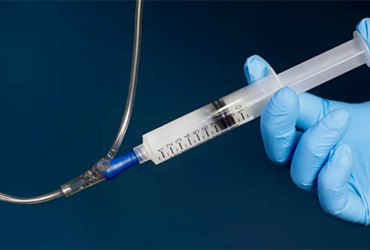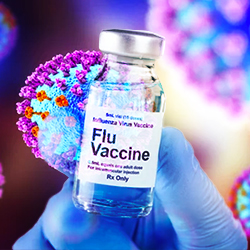By Ethan Covey
The use of key inpatient antibiotics as well as gram-negative resistance were seen during the first year of the COVID-19 pandemic, according to data presented at IDWeek 2023, held in Boston (poster 2244).
However, the trends largely reversed themselves as the pandemic progressed.
“We know that COVID-19 is not particularly associated with increased risk of bacterial coinfection upon presentation to the hospital, yet many patients received antibiotics during those hospitalizations, particularly early on in the pandemic,” said Matthew P. Crotty, PharmD, an infectious diseases clinical pharmacist at Methodist Dallas Medical Center.
To assess the use of antibiotics and incidence of resistant pathogens before and during the first two years of the pandemic, the researchers looked at electronic health record data from patients at least 18 years of age who were admitted to the Methodist Health System from March 2019 through February 2022. Rates of antibiotic administration and antibiotic resistance were assessed.
The study focused on three periods: pre-pandemic (PRE; March 2019-February 2020), pandemic year 1 (PAN1; March 2020-February 2021) and pandemic year 2 (PAN2; March 2021-February 2022).
They found that there were significant increases in the use of azithromycin, ceftriaxone and anti-pseudomonal beta-lactams from the PRE period through PAN1. However, significant decreases were then observed from periods PAN1 to PAN2.

Increases in the incidence of third-generation cephalosporin-resistant bacteria and carbapenem-resistant bacteria were also observed from the PRE period to PAN1.
“The initial surges of the pandemic and PAN1 overall saw increased antibiotic utilization and antibiotic-resistant pathogens,” Dr. Crotty said. “The trends observed normalized over time, suggesting that the dramatic changes observed will not linger indefinitely.
“One trend that did not correct itself during the second year of the pandemic was carbapenem resistance,” he added.
“Perhaps this provides both a glimmer of hope in that year 2 of the pandemic, at least at our hospital, seems to demonstrate we came back to more normal levels,” he continued. “However, there is increased use and resistance during the pandemic and potentially a warning sign for ongoing battles against future pandemics, as well as the opportunity for improved antimicrobial stewardship related to viral illnesses across the board.”
The sources reported no relevant financial disclosures.




